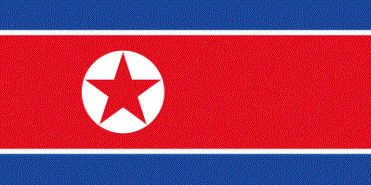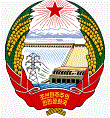Kimhyongjik County (Kimhyŏngjik-kun)
Kimhyŏngjik County is a kun of Ryanggang Province, North Korea. Formerly known as Huch'ang County, it was renamed in 1988 in honour of Kim Hyŏng-jik, the leader of the anti-Japanese liberation movement of Korea.
The 2004 Ryanggang explosion occurred at Wŏltal-lodongjagu in this county.
Kimhyŏngjik is located in the northwestern part of the Kaema Plateau. It borders China to the north (Yalu River region). Although the south is a plateau region, the Yalu River is in the north. The Hŭisaekpong and Rangrim mountain ranges are partly in this county. The highest peak is Hŭisaek-pong. The region bordering on the Yalu River is mainly precipices. The main streams are the Yalu River and its tributaries. The county's land area is 93% forested.
The 2004 Ryanggang explosion occurred at Wŏltal-lodongjagu in this county.
Kimhyŏngjik is located in the northwestern part of the Kaema Plateau. It borders China to the north (Yalu River region). Although the south is a plateau region, the Yalu River is in the north. The Hŭisaekpong and Rangrim mountain ranges are partly in this county. The highest peak is Hŭisaek-pong. The region bordering on the Yalu River is mainly precipices. The main streams are the Yalu River and its tributaries. The county's land area is 93% forested.
Map - Kimhyongjik County (Kimhyŏngjik-kun)
Map
Country - North_Korea
 |
 |
| Flag of North Korea | |
In 1910, Korea was annexed by the Empire of Japan. In 1945, after the Japanese surrender at the end of World War II, Korea was divided into two zones along the 38th parallel, with the north occupied by the Soviet Union and the south occupied by the United States. Negotiations on reunification failed, and in 1948, separate governments were formed: the socialist and Soviet-aligned Democratic People's Republic of Korea in the north, and the capitalist, Western-aligned Republic of Korea in the south. The Korean War began in 1950, with an invasion by North Korea, and lasted until 1953. The Korean Armistice Agreement brought about a ceasefire and established a demilitarized zone (DMZ), but no formal peace treaty has ever been signed.
Currency / Language
| ISO | Currency | Symbol | Significant figures |
|---|---|---|---|
| KPW | North Korean won | â‚© | 2 |
| ISO | Language |
|---|---|
| KO | Korean language |















